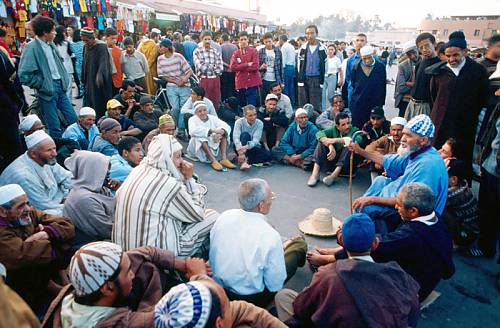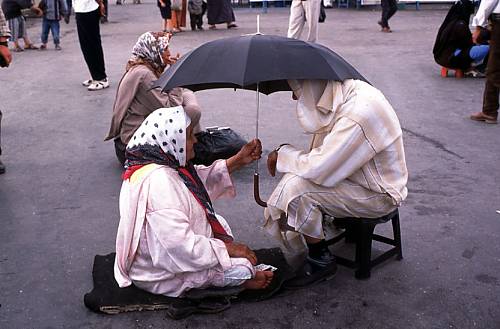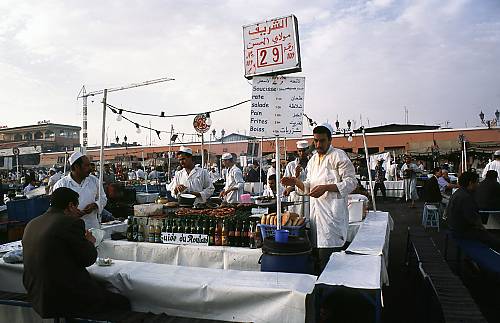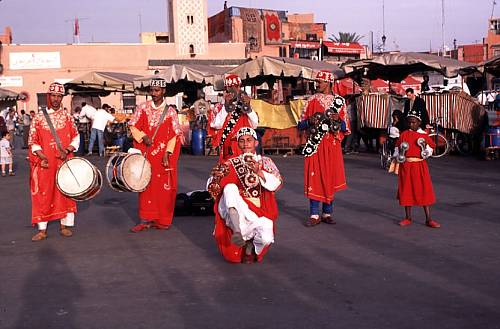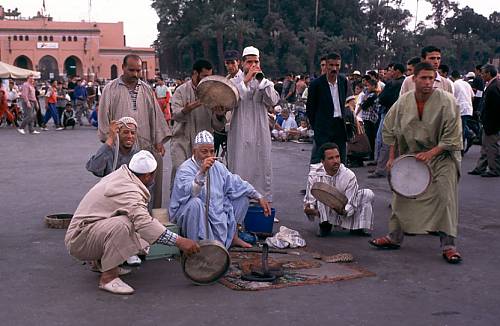Cultural space of Jemaa el-Fna Square
Inscribed in 2008 (3.COM) on the Representative List of the Intangible Cultural Heritage of Humanity (originally proclaimed in 2001)
The Jemaa el-Fna Square is one of the main cultural spaces in Marrakesh and has become one of the symbols of the city since its foundation in the eleventh century. It represents a unique concentration of popular Moroccan cultural traditions performed through musical, religious and artistic expressions.
Located at the entrance of the Medina, this triangular square, which is surrounded by restaurants, stands and public buildings, provides everyday commercial activities and various forms of entertainment. It is a meeting point for both the local population and people from elsewhere. All through the day, and well into the night, a variety of services are offered, such as dental care, traditional medicine, fortune-telling, preaching, and henna tattooing; water-carrying, fruit and traditional food may be bought. In addition, one can enjoy many performances by storytellers, poets, snake-charmers, Berber musicians (mazighen), Gnaoua dancers and senthir (hajouj) players. The oral expressions would be continually renewed by bards (imayazen), who used to travel through Berber territories. They continue to combine speech and gesture to teach, entertain and charm the audience. Adapting their art to contemporary contexts, they now improvise on an outline of an ancient text, making their recital accessible to a wider audience.
The Jemaa el-Fna Square is a major place of cultural exchange and has enjoyed protection as part of Morocco’s artistic heritage since 1922. However, urbanization, in particular real estate speculation and the development of the road infrastructure, are seen as serious threats to the cultural space itself. While Jemaa el-Fna Square enjoys great popularity, the cultural practices may suffer acculturation, also caused by widespread tourism.

